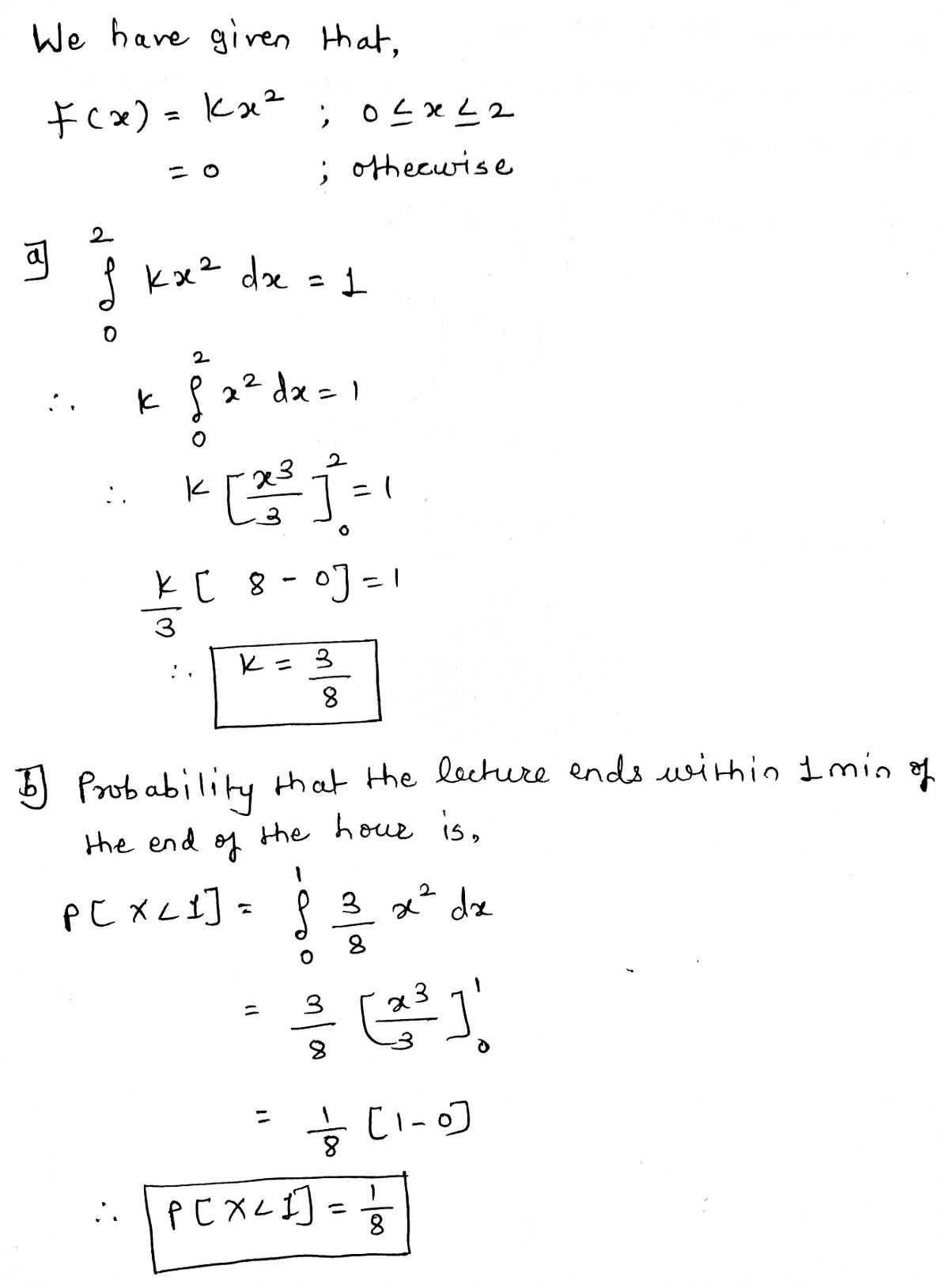2. A college professor never finishes his lecture before the end of the hour and always finishes his lecture within 2 min after the hour. Let X be the time that elapses between the end of the hour and the end of the lecture and suppose the pdf of X is f(x) = kx² for 0
2. A college professor never finishes his lecture before the end of the hour and always finishes his lecture within 2 min after the hour. Let X be the time that elapses between the end of the hour and the end of the lecture and suppose the pdf of X is f(x) = kx² for 0
A First Course in Probability (10th Edition)
10th Edition
ISBN:9780134753119
Author:Sheldon Ross
Publisher:Sheldon Ross
Chapter1: Combinatorial Analysis
Section: Chapter Questions
Problem 1.1P: a. How many different 7-place license plates are possible if the first 2 places are for letters and...
Related questions
Topic Video
Question
100%
Please help me with this question.

Transcribed Image Text:2. A college professor never finishes his lecture before the end of the hour and always
finishes his lecture within 2 min after the hour. Let X be the time that elapses between
the end of the hour and the end of the lecture and suppose the pdf of X is f(x) = kx²
for 0 <x<2 and f(x) = 0 elsewhere.
(a) Find the value of k.
(b) What is the probability that the lecture ends within 1 min of the end of the hour?
(c) What is the probability that the lecture continues beyond the hour for between 60
and 90 sec?
(d) What is the probability that the lecture continues for at least 90 sec beyond the end
of the hour?
(e) Find the cdf of X, F(x), and repeat parts (b), (c), and (d) using F(x) instead of f (x).
Expert Solution
Step 1
ANSWER:-

Trending now
This is a popular solution!
Step by step
Solved in 3 steps with 2 images

Knowledge Booster
Learn more about
Need a deep-dive on the concept behind this application? Look no further. Learn more about this topic, probability and related others by exploring similar questions and additional content below.Recommended textbooks for you

A First Course in Probability (10th Edition)
Probability
ISBN:
9780134753119
Author:
Sheldon Ross
Publisher:
PEARSON


A First Course in Probability (10th Edition)
Probability
ISBN:
9780134753119
Author:
Sheldon Ross
Publisher:
PEARSON
